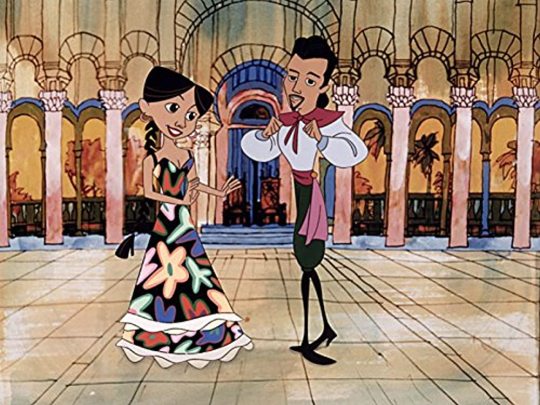#as opposed to 'children with wings in tutu'
Explore tagged Tumblr posts
Text
Speaking of the fae, what gets me about those "dark fae romances" that seem to be so "in" right now is that they don't do anything interesting with the fae lore. Like. Why even call your MC a fae if he never speaks in riddles and can just straight up lie all the time. Why call him a fae and make him impervious to cold iron.
Look. I know that "fae lore" is actually just a disjointed and often self-contradicting collection of completely individual folk tales and mythologies and that no such thing as the Definitive Fae Lore™️ exists, but c'mon. At that point he's just a guy with pointy ears. He's a tolkien elf with an attitude problem. You're allowed to write a yandere legolas fic if you want to write a yandere legolas fic.
#I want to be clear and state this is just me channeling my inner bitter old lady and griping about the current general trend of things#and this isn't me trying to call out/start any beef with any specific series or authors or their fans#also like. this is coming from a korean person whose first exposure to western fae stories where they're this ancient powerful beings#as opposed to 'children with wings in tutu'#came from Changeling: the Lost games#whose own take on the true fae are just basically 'eldritch horrors‚ but with a prettier veneer'#so I may be hopelessly biased when it comes to which type of depictions I prefer 😅#mmari rambles#mmari rants#<-but like. recreationally.#bad tropes#<-or maybe tropes I just dislike. idk.
41 notes
·
View notes
Text
Cinderella September-through-November: "Happily Ever After: Fairy Tales for Every Child – Cinderella" (1995 cartoon series episode)

Happily Ever After: Fairy Tales for Every Child is an animated series that many children of the '90s fondly remember, at least if their parents subscribed to HBO. Each episode adapts a classic fairy tale, but each takes place in a different setting and culture than is traditionally associated with the tale, vividly showcasing each culture and featuring songs (usually two per episode) in the preferred musical style of each setting. Narrated by Robert Guillaume and with a cast of ethnically-appropriate celebrity voice actors for each episode, this series was effectively an animated, multicultural, musical equivalent of Shelley Duvall's Faerie Tale Theatre. Standout episodes include an Inuit version of The Snow Queen, a Caribbean Goldilocks and the Three Bears, a Chinese Little Red Riding Hood, a Southwestern Native American Snow White... and this Cinderella, set in a Latin American kingdom.
In this setting, palm trees shade the land, traditional Mexican clothing is worn, the musical score is infused with a mariachi beat, and the characters' speech is peppered with Spanish words. Cinderella's stepmother (voiced by Raquel Welch, whose famous beauty is in no way reflected by the character's toad-like appearance) is always referred to as the Madrastra, and the heroine receives help from a wild-haired, vivacious and slightly scattered Fairy Madrina (Liz Torres). Otherwise, this is a straightforward, faithful retelling of the familiar story, with just a few unusual or irreverent touches here and there. Cinderella (Daphne Zuniga), with her long black braid and hoop earrings, is a classic lovely ingenue, soft-spoken and kind to all people and animals, but shows her inner feistiness at the end when she refuses to let her Madrastra take the glass slipper from her. She's well matched romantically by the handsome, long-haired and goateed Prince Felipe (Jimmy Smets), and well opposed by the sour Madrastra (although it's slightly odd that Raquel Welch uses her own American accent for the role while everyone else has at least a hint of a Spanish accent) and her ugly stepsisters Margarita and Esmeralda. The Fairy Madrina also charms as she transforms a squash, tomatoes, garlic and chili peppers into the various parts of a coach, mice into horses and two iguanas into a coachman and footman... although she does accidentally dress Cinderella first in a suit of armor, and then in a ballet tutu before she finally conjures up a lacy black floral-print ballgown.
As in most episodes of this series, there are two songs: "Fairy Madrina," a peppy Latin pop number sung by the eponymous character as she demonstrates her magic, and earlier, a fairly odd yet catchy song for the two iguanas, about all the fruits and vegetables they like to eat. Besides singing this song and becoming the coachman and footman, the iguanas also reappear at the end to counterbalance Cinderella's forgiveness of her stepfamily by chasing them away with mischievously bared teeth. The script is also peppered every now and then with irreverent humor: when planning the ball, the King declares that they'll invite people "from all the other fairy tales," and when the Fairy Madrina arrives, she mentions that she used to be the tooth fairy. The animation, while simple and not the most sophisticated, has quirky charm all the same, with a nice balance of vivid colors and earth tones.
While this isn't an essential Cinderella, per se, I'd still definitely recommend it, particularly for Latin American children who would enjoy seeing the classic story reflect their own culture for a change. The same applies to the entire Happily Ever After series, with all its lively charm and multicultural representation.
@superkingofpriderock, @ariel-seagull-wings
#cinderella#fairy tale#cinderella september through november#happily ever after: fairy tales for every child#1995#animation#animated series#episode#latin american representation
33 notes
·
View notes